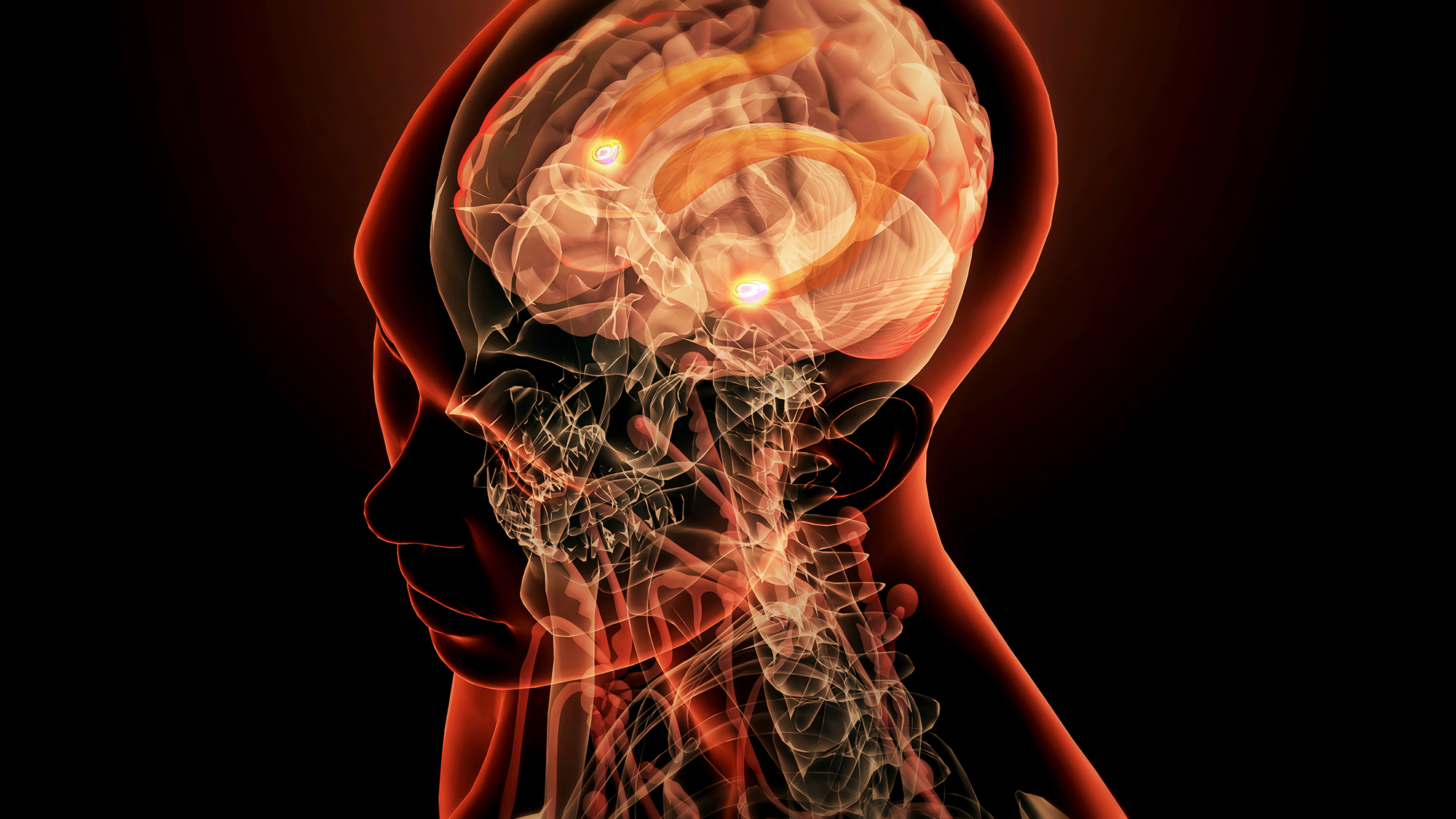“Did they think I was annoying?” “Did I say something boring?” “Were they having fun?” These creeping, intrusive thoughts after having a conversation or attending a party are, psychologically, more than just a nuisance. These thoughts are actually a sign of how well our species has evolved to think deeply about what others might be thinking and feeling. However, our brain’s ancient fear center can sometimes get a little bit too involved when worrying about it.
Now, a new study found that the more recently evolved and advanced parts of the human brain used for socializing are well connected to and in constant dialogue with a more ancient part of the human brain involved with processing fear. The findings are detailed in a study published November 22 in the journal Science Advances.
[Related: See the most detailed map of human brain matter ever created.]
The portion of our brain that controls our social interactions is called the social brain or social cognitive network. It is a more recently developed section of the brain. Our species tends to spend a good deal of time analyzing the reactions and emotions of others, sometimes to our peril. During cognitive behavioral therapy, therapists will often work with patients on this idea of mind reading–a cognitive distortion that happens when you assume you know what someone is thinking, even if you cannot know for sure.
“The parts of the brain that allow us to do this are in regions of the human brain that have expanded recently in our evolution, and that implies that it’s a recently developed process,” study co-author and Northwestern University Feinberg School of Medicine neuroscientist Rodrigo Braga said in a statement. “In essence, you’re putting yourself in someone else’s mind and making inferences about what that person is thinking when you cannot really know.”
The social brain is connected to and in constant communication with a less evolved and older part of the human brain–the amygdala. It is often called our “lizard brain” and is primarily associated with detecting threats and processing fear. The physiological and emotional response to seeing a snake or spider–startled body, sweaty palms, and an increased heart beat–are examples of the amygdala in action. According to Braga, there is more to the amygdala than this “lizard brain.”
“For instance, the amygdala is responsible for social behaviors like parenting, mating, aggression and the navigation of social-dominance hierarchies,” said Braga. “Previous studies have found co-activation of the amygdala and social cognitive network, but our study is novel because it shows the communication is always happening.”
In the new study, the team found that the connection between the newer and more ancient parts of the human brain lies in a specific part of the amygdala called the medial nucleus. It is an important part of the amygdalae because it helps the brain understand social cues like aggression. This connection helps shape the function of the social cognitive network by giving it access to the amygdala’s role in processing emotionally important stimuli. According to the team, this study was the first to show that the amygdala’s medial nucleus is in constant communication with the brain regions involved in thinking about other people.
To see this in action, the team used functional magnetic resonance imaging (fMRI). This noninvasive brain-imaging technique can measure brain activity by detecting changes in blood oxygen levels. Study co-author Kendrick Kay from the University of Minnesota provided fMRI data from six participants’ brains. These high-resolution scans allowed the team to see details of the social cognitive network that lower-resolution brain scans hadn’t detected. The team was also able to replicate the findings up to two times in each brain studied.
“One of the most exciting things is we were able to identify network regions we weren’t able to see before,” study co-author and Northwestern Ph.D. student Donnisa Edmonds said in a statement. “That’s something that had been underappreciated before our study, and we were able to get at that because we had such high-resolution data.”
[ Related: Stress and anxiety wear down your brain. Here’s how to fight back. ]
Anxiety and depression can both involve hyperactivity in the amygdala and deep brain stimulation can be used as a treatment option for severe cases. However, the surgical procedure is very invasive since the amygdala is located deep inside the brain and directly behind the eyes. These study’s findings could lead to improvements in a less-invasive procedure called transcranial magnetic stimulation (TMS). This procedure uses magnetic fields to stimulate nerve cells in the brain to improve symptoms of major depression where other treatment methods have not been effective.
“Through this knowledge that the amygdala is connected to other brain regions–potentially some that are closer to the skull, which is an easier region to target–that means people who do TMS could target the amygdala instead by targeting these other regions,” Edmonds said.


